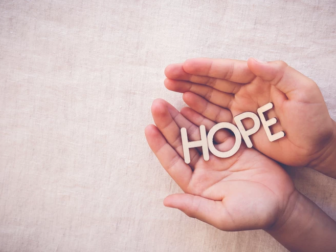Did you know that babies can have strokes while still in their mama's womb? Did you know that the likelihood of this happening is 1 in 1000 live births? I was completely shocked to find out both of these facts. Only 3 years ago, I was totally content in my belief that strokes were only for the elderly population, I had no idea it could happen to people of all ages, let alone babies who were safely tucked in their mama's bellies.
My name is Brooke, and I want to tell you why these stats not only matter to me professionally, but also on a very personal level.
Our Journey

In January of 2015, my husband Joe and I, brought home our second son. He was a sweet little bundle and Theodore (Theo) instantly stole our hearts. His big brother Beckett loved to touch his soft cheeks, watch him squirm, and loved to show him his toys. We spent the winter getting to know our new family member, studying every detail, and watching him grow.
Between 3-4 months old, I noticed that Theo wasn’t using his right arm as much as his left. He had been seeing a chiropractor since about 1 month old because we believed he had a slight torticollis (neck weakness). Not much improvement had been noted and with the addition of his arm use discrepancy, I began to wonder if there was something more going on. I started watching his movements even closer, and by his 4 month ‘well visit’ I alerted the doctor of my concerns; asking for an assessment. She booked Theo for a physio appointment in a months time, but even before that day arrived, I was growing even more worried by Theo’s lack of development. At the physio appointment, we were given some new “exercises” to try and were told nothing seemed too serious yet… “let’s just wait and see”. This didn’t sit very well with me.
Between 4 and 6 months, I worked with Theo daily. I had set up a bunch of mini activity centers in his crib, his playpen and the floor; working with him as much as possible to encourage him to roll, or to grab with his right hand. I’d go through the series until a nap and then start the activities all over again once he woke up. All the while, I was doing my best to entertain a 2 year old, and “sort of” keep a house.
By Theo’s 6 month appointment, I was a wreck. My early concern, had grown past worry, and was starting to be on the edge of fear. Theo was still very “colicky”, so very little sleep was happening for either of us. Every day I felt like no matter how hard I worked with him, how hard I prayed, no progress was being made. Family and friends continued to be positive and downplay my worries, but even they agreed there might be something going on. Certainly nothing serious though. I had agonized enough. My baby was struggling, and I needed an answer.
Google Diagnosis
There were 3 possibilities that the “google” monster lead me to whenever I was researching what possibly could be going on with our son.
1) Birth trauma (nerve damage from a forceful/quick exit)
2) Perinatal (in utero) stroke
3) Something terminal or degenerative - and I wasn’t really allowing my heart to go to the third one just yet.
I made a list of my growing concerns for the doctor and after she heard me out, she asked me what I wanted. I said that I believed the problem was neurological and that I wanted an MRI. As soon as we could get one. She was not totally convinced, but she put in her recommendation.
Theo's Diagnosis


When Theo was 9 months old he finally had his MRI, and the results were crystal clear. We were told that our baby had survived a perinatal stroke, probably 2-3 weeks before he was born. The injury was contained to the left hemisphere, so the right side of his body would show the effects. Doctors could not guarantee anything, but explained that his motor skills would be affected, his speech, and possibly other struggles with learning. Only time would tell how extreme, and we could work with the issues as they started showing up. Once again, we heard the dreaded words, “just wait and see”.
I was a stubborn mama and waiting has never been my strong suit. It made me angry that we had to wait to see what our sons deficits would be before we could access the best resources. I scoured the internet for something, anything that might help our little warrior. I stumbled upon the Anat Baniel Method, was intrigued, and ordered the book “Kids Beyond Limits” immediately. Within a few weeks of finding ABM, we had Theo’s first 2 intensives booked.
Our Experience with ABM
We anxiously waited for those first appointments, hoping with all of our heart that we would see something change, some progress in Theo’s development. It was after his second lesson on the first day that Theo reached for his feet, while in his carseat, for the first time. I was blown away. First, because I hadn’t even realized that he had never done it, but more importantly that I noticed a “change” so quickly. The rest of the week we watched as our little sweetheart started to move a little more, started becoming more aware of his surroundings, and started using his voice more - the sweetest new sounds we had ever heard.

It was after his third intensive - not even 3 months after starting ABM, that Theo started army crawling. My husband and I were beyond excited and we were starting to feel like we had actually found something that truly helped Theo. We had witnessed such a HUGE positive progression in such a short time, where for so long there had been very little. We had also found a new hope in the ABM community of parents and practitioners. The loneliness that we felt was slowly disappearing.
The possibility of taking the ABM training had been plaguing me ever since I had first read about it on the website, a few months prior. I made a list of pro’s and con’s, and Joe and I sat down to discuss the opportunity. After some talking, but mostly silence, we both agreed that I needed to do it. It made almost no sense for the life that we led, but we just knew I had to do it. We both felt it was a crazy leap of faith, but we trusted that this could be the best thing for Theo. The theory and principles of the ABM made more sense to us then most traditional therapies, and we knew that we needed to better understand why our son was changing.
Becoming an ABM Practitioner

From March 2016 - May 2017, I completed the ABM Basic training. In just 2 weeks (March 2018), I will finish the first of 3 continuing education programs - working with Children with Special Needs. It has been an amazing journey so far. I have felt completely inspired watching Theo continue to develop month after month, and feeling myself transform from the trainings. Along the way, I have witnessed many children develop past what doctors ever thought possible. I have heard testimonies of incredible emotional and physical breakthroughs. I have made lifelong friends that span the globe.
Life is crazy. This experience is at times unbelievable. It went from being my worst nightmare, to possibly a dream come true. There was a time, before Theo was even born, that I wondered what I would do after my children were in school. Something that would be easy to fit into a life with kids, something that was flexible with my husband's job. Most importantly, I wanted to love the career, and I wanted to be proud of the work I did. Somehow, our little miracle survivor Theo fulfilled this dream, and has granted me access into the beautiful world of special needs.


I feel so blessed to have found this work for Theo, for my own growth, and for the people I have the opportunity to work with. I am so excited to meet and connect with both children and adults. To give hope, where there wasn’t any left. To help others realize that the human brain can learn and grow and become better at whatever it is, that person wants to do better. To show how important brain plasticity is for every one of us, not just those who have had an injury or received a diagnosis. To encourage clients to adopt the Nine Essentials for positive brain change - and start believing that they REALLY can change at any age!
This work is powerful, exciting, and beautiful. I cannot wait to start practicing my passion!





